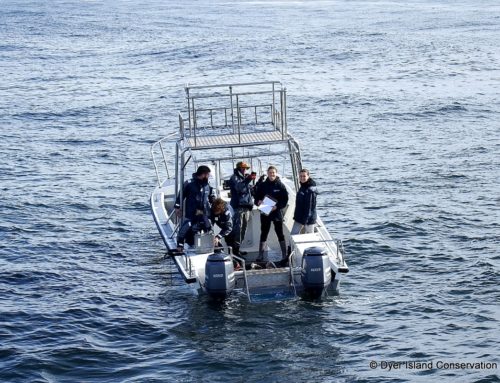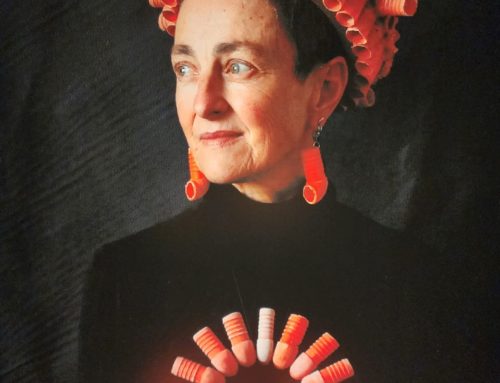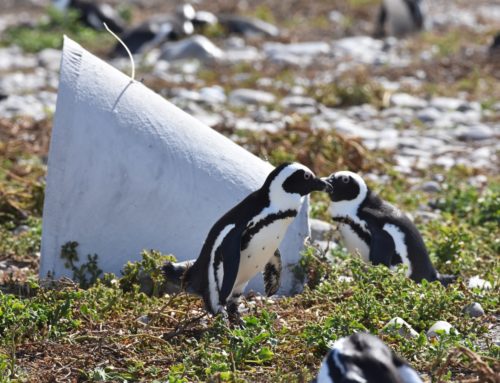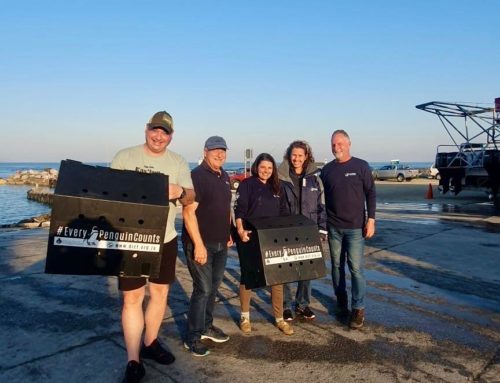We are all entering the year 2021 with a large amount of apprehension and anxiety. To counter these “symptoms” the African Penguin & Seabird Sanctuary (APSS) issued a perky penguin prescription filled with a good dose of joy and hope on the first day of 2021. Fourteen African penguin fledglings and four adult penguins were returned to the wild after spending time recuperating at the APSS. Watch the unboxing here.
Every penguin counts

The release of African penguins back into the wild always offers a moment of hope. We are at a point where every bird that we can save, counts. African penguin colonies are declining at an alarming rate. In 1965 around 141 000 breeding pairs of African penguins were counted, but last year the total had plummeted to only 13,500 pairs.
The newly fledged youngsters were initially removed from Dyer Island by CapeNature on the 1st of December as abandoned or underweight chicks. November-December is normally the end of the breeding season and chicks are supposed to be at the fat & healthy fledgling stage, ready to be kicked out of the nest to start fending for themselves.
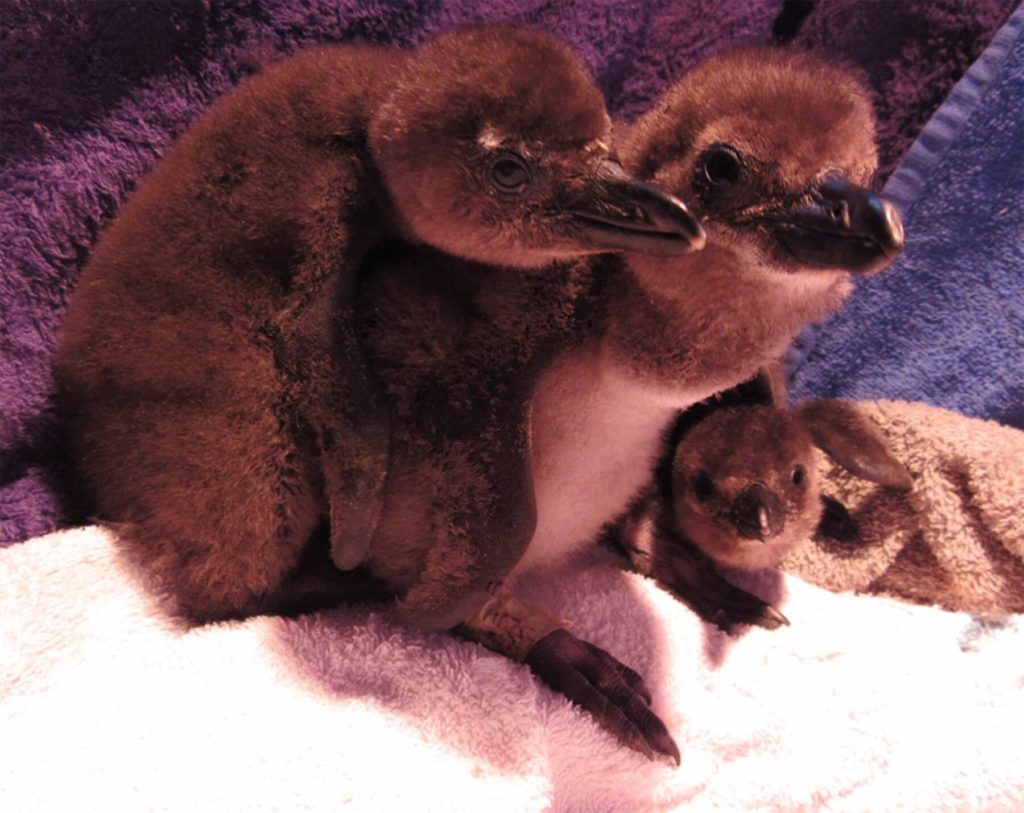
At the end of the breeding season some penguin parents are faced with a dilemma, not only do they have to feed their young, they also need to undergo a full feather change, the big annual moult. Due to a variety of circumstance, sometimes the parents start their moult before their offspring has reached the fledgling stage. The chicks of the moulting parents will either starve to death on the island or venture into the ocean without the required amount of fat reserves to allow them to survive the challenges of the wild. The rescue and hand-raising of these underweight chicks & chicks of moulting parents is an important part of the bigger African Penguin Biodiversity Management Plan.
The “change of feather” process is often referred to as a “catastrophic moult” because all the feathers are replaced at once. Before the onset of the moult, penguins have to build up enough fat reserves (about 3 times their normal body weight) to stay on land for their entire moult because they are not waterproof during that time and therefore, they cannot hunt.

According to Xolani Lawo, senior bird rehabilitator at the APSS, the public can assist in the massive task of saving the African penguin from extinction. “At the APPS we are willing to do the hard work of cutting sardines into sushi sized pieces, feeding all the begging little orphans and scrubbing & disinfecting the sanctuary daily but it is through the generosity of the public that we are able to do this work.” says Xolani.
How you can be a part of the solution
The public can donate to the Fishy Fund to help feed the penguins or buy a booster block to assist with the rebuilding of the African penguin population. Donations of old towels are always welcome. “African penguins are part of our heritage. They are charismatic creatures and by getting to know about them more people would be able to spread the word about the plight of our penguins” Xolani said.
The African Penguin & Seabird Sanctuary is situated in Kleinbaai and is open daily from 09:00 to 16:00. Visitors can observe the penguins through one-way glass and contribute to the cause by indulging in the coffee and cake on offer.
Why does every African penguin count?
What do we lose if the African penguin disappears from our wild seascape? We lose an iconic, cute beach waddling, black & white flightless bird that provides great entertain for those thousands of visitors spotting them at the land-based colonies on our coast. But far more importantly, we cannot replace their vital services to the eco-system around their breeding colonies. They are ocean fertilisers. They play an important role in the functioning of marine ecosystems. Penguins bring large amounts of nutrients from the ocean to their colonies. The areas around colonies are a great place for fish nurseries. Not only do penguins and seabirds have a beneficial bottom-up impact but they also exert valuable top-down control. For example, they may select prey that is small and in poor body condition and by removing these substandard individuals they ensure the long-term survival of prey populations.

We have created a perfect storm, a collapsed penguin population because of a range of historic human impacts, a near to nothing sardine biomass because of overfishing. The 2018/2019 Sardine stock assessment are at the lowest since the 1980s showing an almost complete absence of sardines from the West Coast.

A vicious circle of low penguin numbers means less nutrients available to fish nurseries around colonies, add overfishing and BOOM!
Bottomline – the large decreases in seabird populations, as have been observed for African Penguins in South Africa have detrimental consequences for ecosystem functioning.
This is now impacting all of us, not just the penguins. The lack of sardines will not only affect marine species it now cuts close to our own human bones. No more sardines to catch leads to more unemployment.
Can we weather this storm? Conservation and the fishing industry can work together towards a mutually beneficial strategy. Responsible fisheries should promote protection of living aquatic resources and their environments and coastal areas. An adaptive time (during peak breeding season) and area closure (around breeding islands) management system can help to turn the situation around. Is there the will to make this change? WE DO NOT HAVE A CHOICE.

